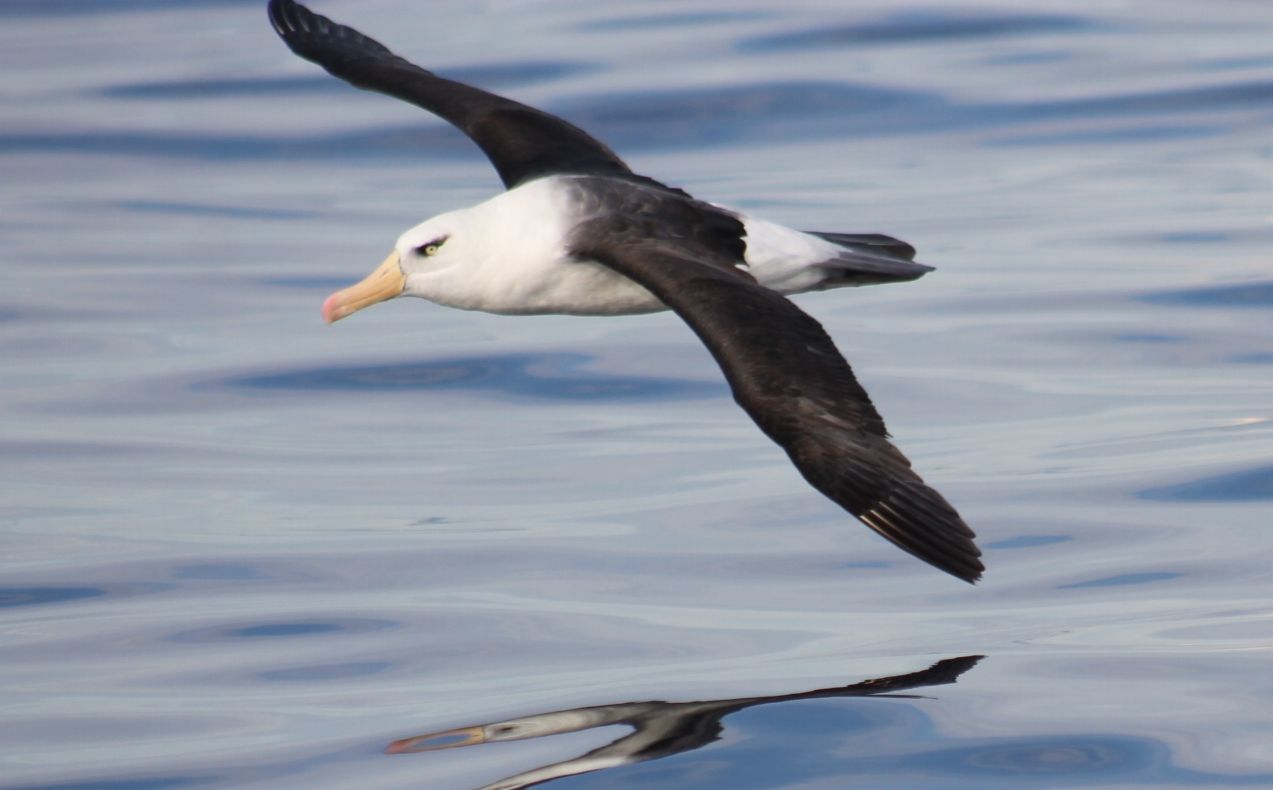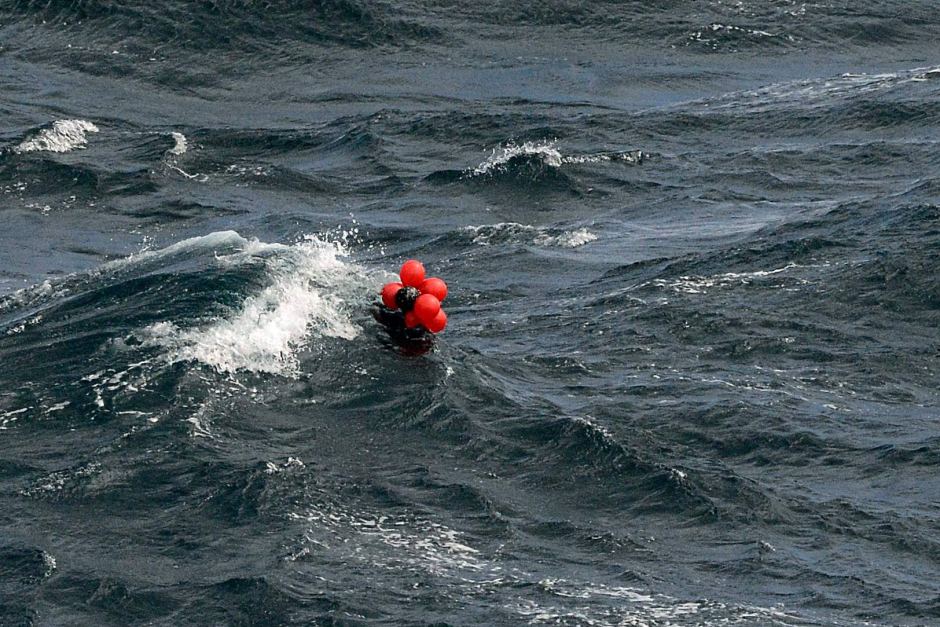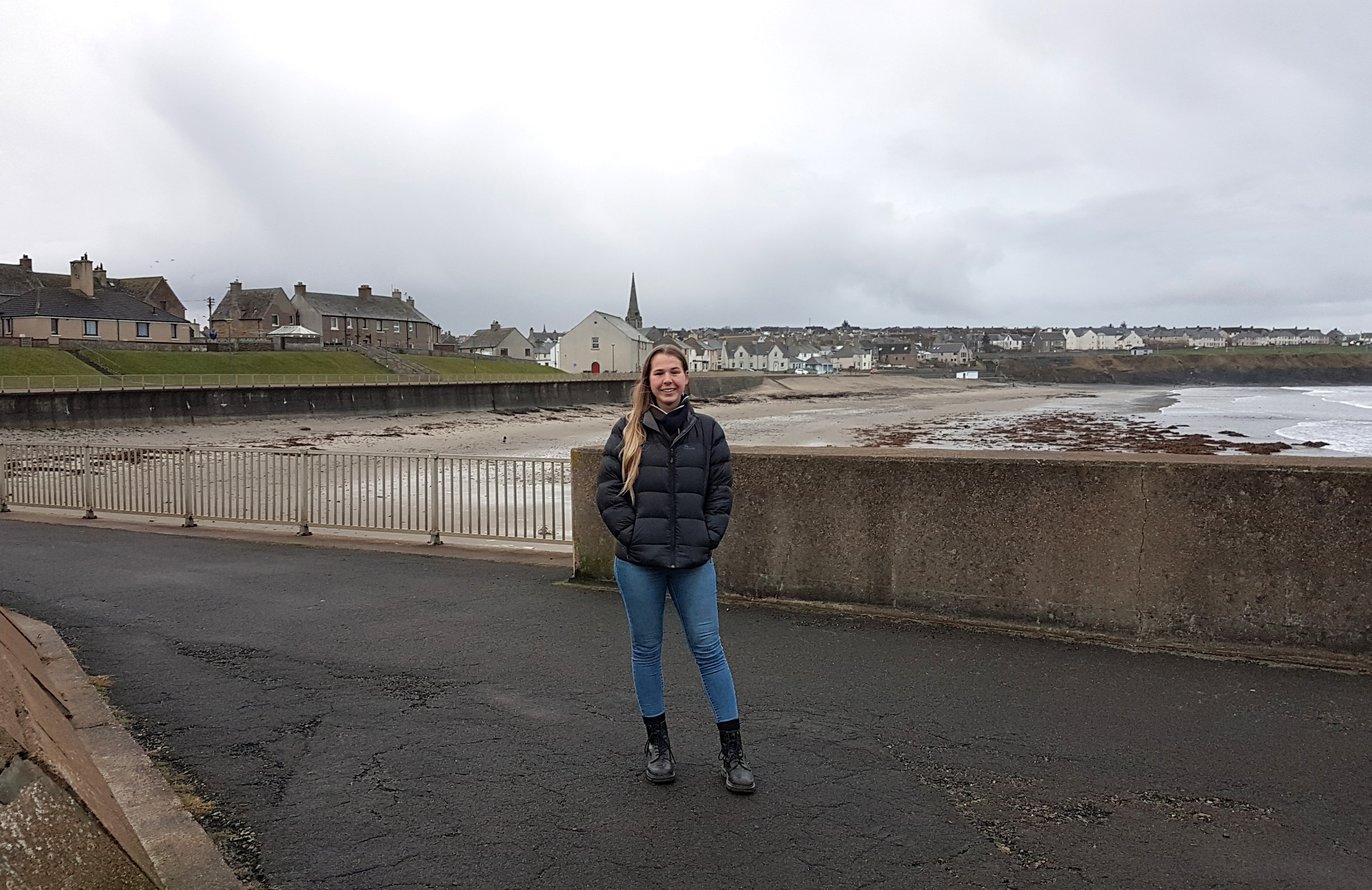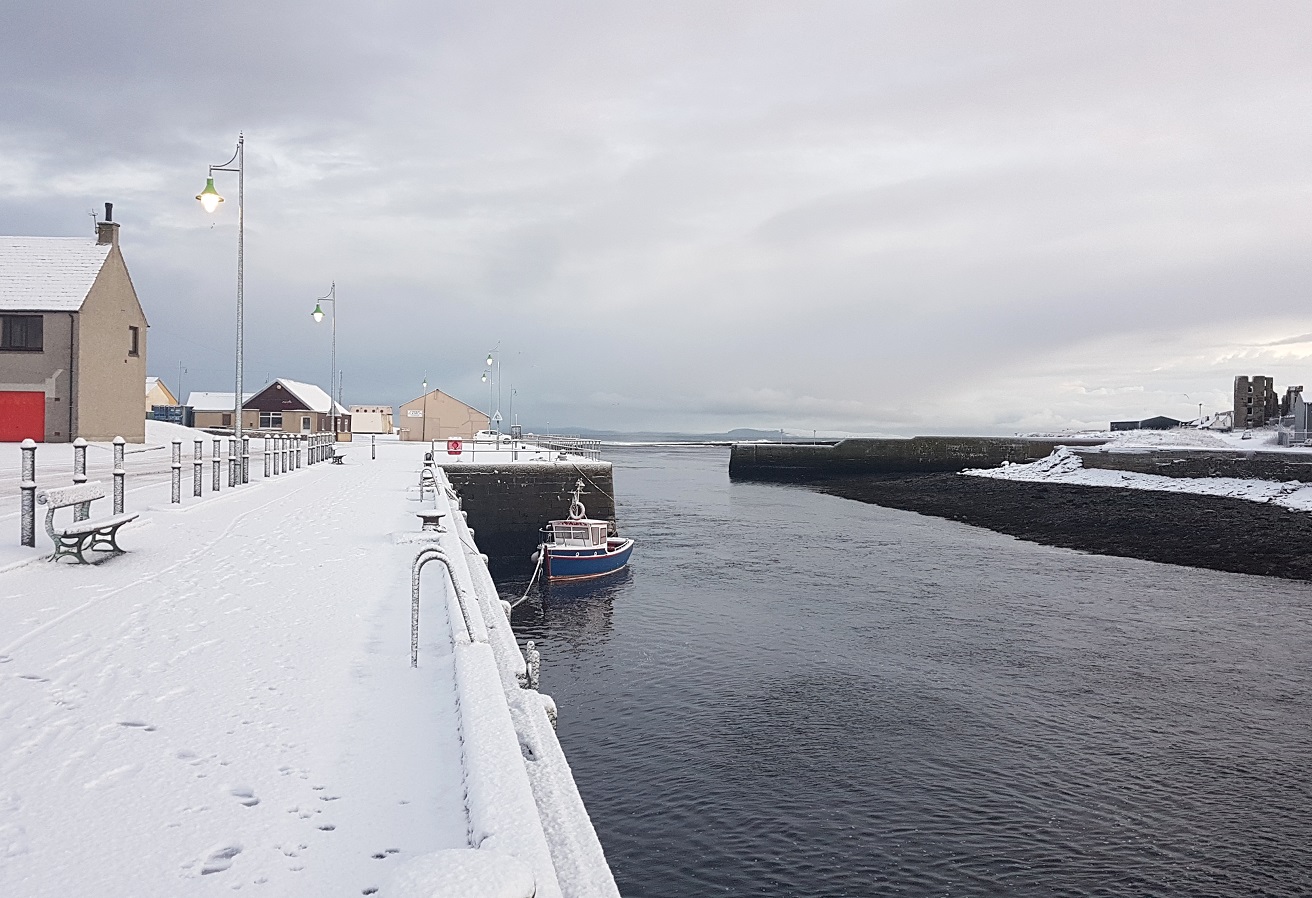March 3 - 9, 2019: Issue 395
Balloons Are The Number 1 Marine Debris Risk Of Mortality For Our Seabirds

Black-browed Albatross (Thalassarche melanophrys) - picture by A J Guesdon, 2015 Visit: Sea Birds off the Pittwater Coast: Albatross, Gannet, Skau
March 1, 2019: University of Tasmania
A new study has found that balloons are the highest-risk plastic debris item for seabirds -- 32 times more likely to kill than ingesting hard plastics. Researchers looked at the cause of death of 1733 seabirds from 51 species and found that one in three of the birds had ingested marine debris.
The data showed that a seabird ingesting a single piece of plastic had a 20 per cent chance of mortality, rising to 50 per cent for nine items and 100 per cent for 93 items.
Led by IMAS-CSIRO PhD student Lauren Roman and published in the journal Scientific Reports, the study found that although hard plastic accounts for the vast majority of debris ingested it is far less likely to kill than soft plastics such as balloons.
"Marine debris ingestion is now a globally recognised threat," Ms Roman said.
"However, the relationship between the amount or type of debris that a seabird ingests and mortality remains poorly understood.
"Among the birds we studied the leading cause of death was blockage of the gastrointestinal tract, followed by infections or other complications caused by gastrointestinal obstructions.
"Although soft plastics accounted for just 5 per cent of the items ingested they were responsible for more than 40 per cent of the mortalities.
"Balloons or balloon fragments were the marine debris most likely to cause mortality, and they killed almost one in five of the seabirds that ingested them.
"As similar research into plastic ingestion by sea turtles has found, it appears that while hard plastic fragments may pass quickly through the gut, soft plastics are more likely to become compacted and cause fatal obstructions," Ms Roman said.

Researchers on the RV Investigator came across the party balloons still inflated and tied together. Supplied: Eric Woehler/ Birdlife Tasmania
CSIRO co-author Dr Chris Wilcox said the approach taken in the study was first developed for turtles before being applied to seabirds.
"These two applications are the first time there has been a robust estimate of the impact of plastic ingestion on free living marine species," Dr Wilcox said.
"This is a critical step in triggering action to address plastic pollution."
Ms Roman said that although the study showed that soft items like balloons are more dangerous, all plastics pose a mortal threat to seabirds.
"If seabirds eat plastic their risk of mortality increases, and even a single piece can be fatal.
"While hard plastics are less likely to kill than soft plastics they were still responsible for more than half of the seabird deaths identified in our study.
"The evidence is clear that if we want to stop seabirds from dying from plastic ingestion we need to reduce or remove marine debris from their environment, particularly balloons," Ms Roman said.
Lauren Roman, Britta Denise Hardesty, Mark A. Hindell, Chris Wilcox. A quantitative analysis linking seabird mortality and marine debris ingestion. Scientific Reports, 2019; 9 (1) DOI: 10.1038/s41598-018-36585-9
MARINE PLASTICS RESEARCH TAKES IMAS STUDENT FROM BUSHFIRES TO SNOW
News By Institute for Marine and Antarctic Studies, University of Tasmania
As Tasmania battles bushfires and one of the driest and hottest Januarys on record, IMAS PhD student Megan Grant has been experiencing snow at the other end of the planet while undertaking a research fellowship in Thurso, on the far north coast of Scotland.
“I left Tasmania on Monday 14th January and it took me over 45 hours to get here,” she said.
“Thurso is the northern-most town on the UK mainland, and after flying to London and then to Inverness I still had a 4-hour train journey to get here.
“Not so surprisingly, Thurso is just about as far away from home in Launceston as I can get without leaving Planet Earth!”

IMAS PhD student Megan Grant
Ms Grant is in Thurso on a newly created fellowship awarded by the Association of Commonwealth Universities (ACU) and funded by the UK Government to support research and innovation in marine plastics.
“The fellowships provide 35 PhD and early career researchers with two to three month placements at ACU member universities in a country other than their own.
“In 2017 I did honours at IMAS, studying the incorporation of plastic in Brown Booby (Sula leucogaster) nests at 18 sites around the world as part of the Adrift Lab, and I decided to stay on and undertake a PhD researching marine plastic pollution and the impacts on seabirds.
“While here, I’m working on developing a standardised methodology for quantifying the level of plastic and other anthropogenic debris within Northern Gannet (Morus bassanus) nests.
“Northern Gannets are from the same family as Brown Boobies but their nests are nothing alike.
“Gannets build nests over multiple years and incorporate mostly rope and netting.
“The nests are complex, and at first glance it seems like an impossible task to calculate how much debris has been used.
“Rather than counting the exact quantity of debris, I’ll be using photographs of gannet colonies taken by researchers and citizen scientists and exploring image recognition and image processing software to identify the most efficient approach for extracting data and determining the proportion of debris within nests.
“This will give us an indication of the severity of the issue at each individual nest and at the colony overall.
“Comparisons between colonies can then be made and colonies at risk can be identified which will help direct and focus future monitoring efforts.
“My time here in Thurso concludes at the end of March and I hope to have made significant progress on a methods paper prior to my departure, and while I’m here I’ll also be taking part in the Commonwealth Blue Charter Capacity Audit, which aims to map the current status of marine plastic research across Commonwealth countries.
“Once I get home I’ll be applying for the Ocean Plastic Conference held in Melbourne in December 2019 so I can present the findings of my research undertaken here in Thurso,” she said.
